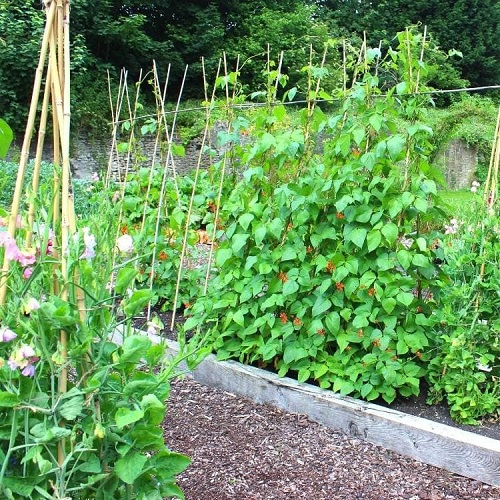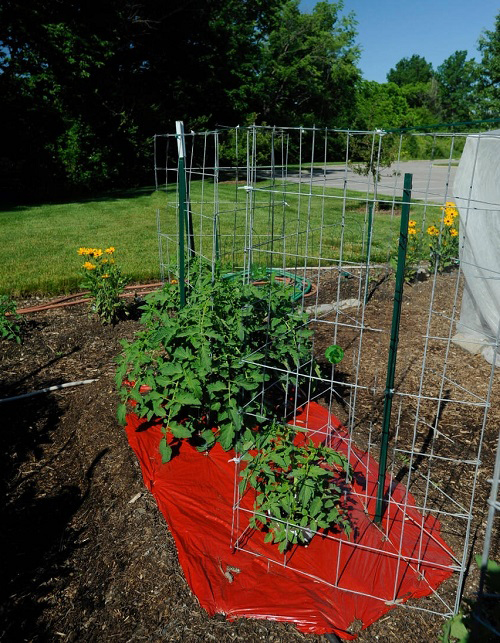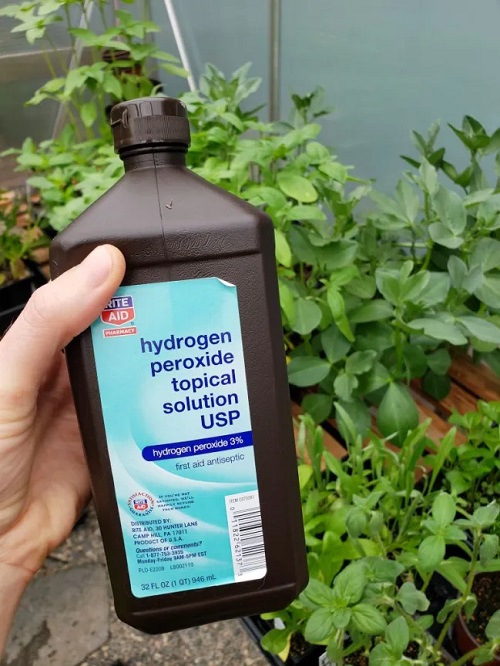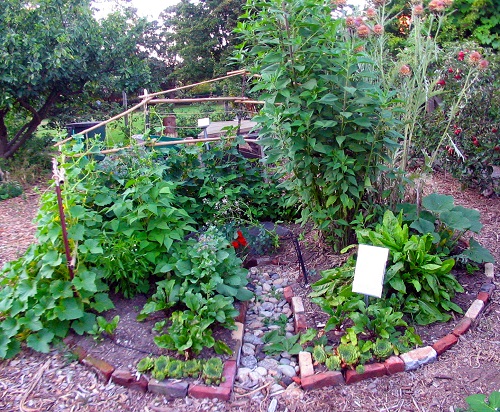Explore the Best Tricks to Grow Vining Vegetables Like Never Before to maximize yields in a limited space.
If you have a small gardening area but still you want to plant veggies, then employ these Best Tricks to Grow Vining Vegetables Like Never Before!
Apply these 9 Home Based Tricks and Tips for Tastiest Zucchini Harvest Ever
Best Tricks to Grow Vining Vegetables Like Never Before
1. Pick the Best Vining Vegetables

Vining vegetables come in many varieties. When selecting seeds or transplants, ensure you pick vining or “indeterminate” varieties. This means the plant will continue to grow and produce vegetables throughout the season. Here are the best ones you must go for:
1. Tomatoes:
- ‘Sweet Million’: Known for its huge clusters of sweet, bite-sized fruit.
- ‘Brandywine’: A popular heirloom variety that produces large, flavorful tomatoes.
- ‘Sungold’: These orange cherry tomatoes are incredibly sweet and prolific.
- ‘Green Zebra’: Strikingly beautiful and flavorful green striped tomatoes.
2. Cucumbers:
- ‘Marketmore 76’: This cucumber variety is resistant to most cucumber diseases and produces delicious, dark green cucumbers.
- ‘Lemon’: A round, yellow cucumber that’s sweet and tender, excellent for salads or pickling.
3. Squash and Pumpkins:
- ‘Tromboncino’: This variety of squash is a vigorous grower and produces long, curved fruits that can be eaten when young or mature.
- ‘Jack Be Little’: A miniature pumpkin variety that’s perfect for kids and fits in the palm of your hand.
4. Melons:
- ‘Sugar Baby’ Watermelon: A compact variety that produces sweet, small fruits that are perfect for a family.
- ‘Hale’s Best Jumbo’ Cantaloupe: Known for its sweet, aromatic, and flavorful fruit.
5. Pole Beans:
- ‘Kentucky Blue’: This bean variety is known for its long, straight, and flavorful pods.
- ‘Scarlet Runner’: This variety is known not only for its tasty beans but also for its beautiful red flowers.
Check out DIY Vertical Vegetable Garden Ideas To Grow More Food here
2. Go for Companion Planting
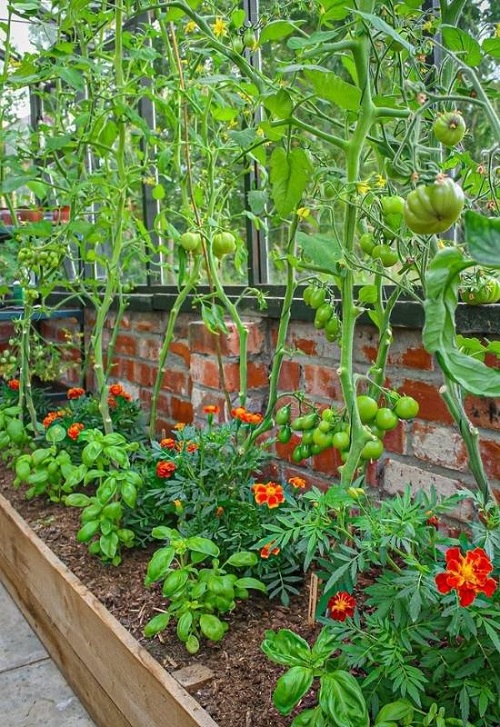
Here are Companion Planting Combination Ideas
3. Do Not Miss Out on Succession Planting
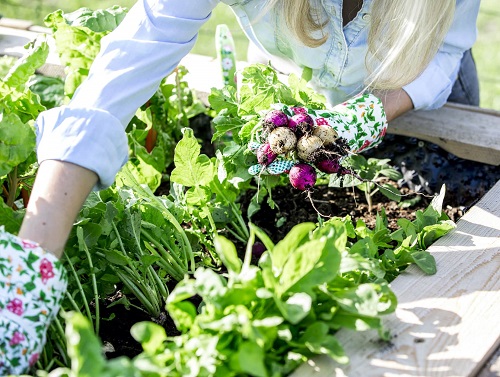
Check out the Best Climbing & Vining Vegetables for Containers to Grow Vertically here
4. Try Vertical Gardening and Espalier
Although it is common to provide support for vining plants, you can take this a step further by applying the principles of vertical gardening or espalier. You can train your plants to grow in specific patterns or directions.
This not only makes for an attractive garden but also optimizes the use of space, sunlight, and airflow, leading to increased yields.
Here are Urban Vertical Gardening Ideas For Small Spaces
5. Use Reflective Mulches
Reflective mulches, like silver-colored plastic, can be used around your vining plants. These mulches reflect sunlight up onto the undersides of leaves, helping the plant to photosynthesize more efficiently and increasing your overall yield.
Check out Best Mini Vegetables to Grow here
6. Use Hydrogen Peroxide to Your Advantage!
It provides extra oxygen to the roots, helping them absorb nutrients more efficiently. Additionally, hydrogen peroxide can help to control pests and diseases by killing harmful fungi, bacteria, and insect larvae.
Materials Needed:
- 3% Hydrogen Peroxide Solution (available in most pharmacies)
- Water
- Spray Bottle
Steps:
- Prepare the Solution: For a safe and effective concentration, mix 1 part of the 3% hydrogen peroxide solution with 32 parts water. For instance, if you’re using a 1-liter spray bottle, add approximately 30 ml of hydrogen peroxide, and fill the rest with water.
- Apply to the Soil: Before you water your vining vegetables, pour the hydrogen peroxide solution into the soil around the plants. Ensure you’re not pouring it directly onto the plant itself as it can cause damage to leaves if the concentration is too high. Water your plants as normal after the application.
- Spray the Foliage: You can also spray a weaker solution (1 part 3% hydrogen peroxide to 64 parts water) directly onto the foliage of your plants. This can help with the prevention of fungal diseases.
- Use Sparingly: Hydrogen peroxide can be beneficial to plants, but only in moderation. Overuse can damage beneficial organisms in the soil. Use the hydrogen peroxide solution once every few weeks or only when necessary.
Check out Tips To Create A Decorative Container Vegetable Garden here
7. Experiment with Moon Gardening
Moon gardening, also known as lunar gardening, is a traditional practice that involves scheduling planting, pruning, and harvesting activities according to the lunar phases.
The idea is that, just as the moon’s gravitational pull influences the tides, it also affects the flow of moisture in the soil and plants, thereby influencing plant growth.
- New Moon Phase: The new moon phase is when the moon is not visible from Earth. It’s believed that this is an ideal time to plant above-ground crops that bear their seeds outside the fruit (like leafy greens and grains). However, it is not the best time for planting vining vegetables.
- Waxing Phase: The waxing phase is when the moon is growing larger in the sky, between the new moon and the full moon. This phase has strong upward energy, making it a good time to plant above-ground crops, including most vining vegetables like tomatoes, cucumbers, and beans. The gravitational pull is lower, but the moonlight is strong, encouraging leaf growth.
- Full Moon Phase: During the full moon phase, the gravitational pull is high, which can stimulate root growth. It’s generally considered a good time to plant root crops or transplant seedlings of above-ground crops.
- Waning Phase: The waning phase is when the moon is shrinking in the sky, from the full moon back to the new moon. The energy is believed to be downward and inward, making it a good time for pruning, mulching, and composting. It’s also an excellent time to plant root crops.
To apply moon gardening to your vining vegetables, you’d generally want to plant them during the waxing moon phase, when leaf growth is encouraged. For transplanting seedlings, consider doing so around the full moon, when root development is supported.
Note: While moon gardening is an ancient practice with many adherents, it’s worth noting that scientific evidence to support its efficacy is limited. But many gardeners find that it adds a rhythm and a sense of connection to natural cycles in their gardening practice.
Check out Vegetables That Look Like Cucumbers here
8. Try Aquaponic Systems
If you’re feeling particularly adventurous, you could consider setting up an aquaponic system. In these systems, fish and plants are grown together.
The fish waste provides an organic food source for the growing plants, and the plants provide a natural filter for the water the fish live in. This creates a sustainable ecosystem where both plants and fish can thrive.
Remember, gardening is as much an art as it is a science. Feel free to experiment with these unconventional methods to see what works best in your garden.
Each garden is unique, and what works best for one might not work as well for another. The most important thing is to enjoy the process.
Here are Aquaponics Fish Tank DIY Ideas
Quick Tips
- Vining vegetables generally prefer well-drained, fertile soil with plenty of organic matter. Before planting, work compost or well-rotted manure into the top 12 inches of soil.
- Vining vegetables require sturdy support structures. Trellises, stakes, or cages are all suitable. This vertical support allows the plants to grow upward, increasing airflow and sun exposure, which in turn can reduce the risk of disease and boost harvests.
- Vining vegetables have deep root systems and need thorough watering. Water deeply and infrequently rather than shallowly and often. This encourages roots to grow deeper, where soil stays moist longer.
- Pruning can help increase airflow and light penetration, reducing the risk of disease and increasing yield. Remove any dead or diseased leaves and branches.
- Training vines to grow up their supports can also help manage growth and increase yields. Use soft ties to gently secure the vines to the structure.
- Common pests include aphids, squash bugs, and cucumber beetles. Regularly inspect your plants for signs of pests or disease, and use organic methods to control them. Companion planting can also help deter pests.
- Frequent harvesting encourages more production. Harvest your vegetables when they are young and tender for the best flavor.

